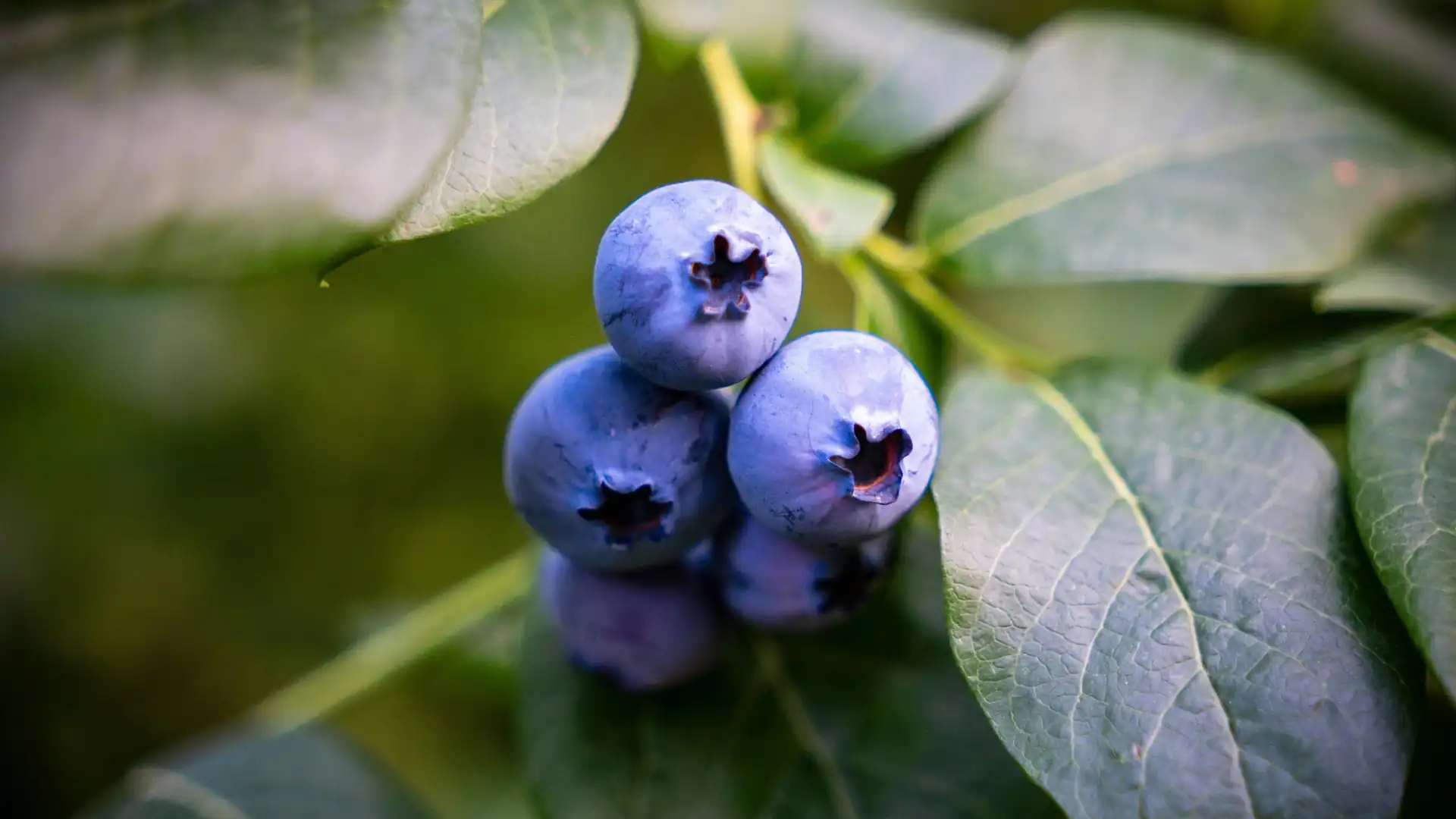The blackcurrant is a fruit with extraordinary health properties, making it one of the most useful berries for well-being. Particularly in summer, you should eat as many fresh berries as possible: pure, in a fruit salad or as juice. If they are processed into jam or jelly, valuable ingredients are lost.
But what makes blackcurrant healthy? Blackcurrant juice is an old home remedy for sore throats because it has antibacterial and anti-inflammatory properties. For rheumatic diseases and joint inflammation, the effect of the juice is also used, as well as that of a tea made from the leaves.
Visually, they can't compete with their red and white relatives - but that's what makes them a superfood! In fact, it is the so-called anthocyanins that are responsible for the black-purple colouring: these are secondary plant substances that are attributed with numerous positive properties.
Summary
BLACKCURRANT PROPERTIES
Because they are nutritious and full of micronutrients, regular but controlled consumption of blackcurrants can be linked to a number of health benefits, including antioxidant and antimicrobial effects, autoimmune support, heart health, nervous system support, eye health, kidney support and blood sugar control.

ANTIOXIDANT EFFECT
Blackcurrants are rich in phenols and anthocyanins, which are types of antioxidants. Although the exact concentration of these compounds may vary depending on the ripeness of the fruit (as well as other influencing factors) regular consumption of blackcurrants may be associated with reduced oxidative stress and improved resistance to free radical damage.
All these factors can be considered prerequisites for improving general well-being and the effective functioning of the body's cells.
VITAMIN C
As 100 grams of blackcurrants can provide 302% of the daily dose of vitamin C, regular consumption of these fruits can play a role in preventing various diseases, health conditions and the build-up of oxidative stress in the body.
IMMUNE SYSTEM SUPPORT
There is evidence that supplementing with blackcurrant seed oil may be beneficial in healthy adults due to its high content of polyunsaturated fatty acids (also known as healthy fats).
ANTIMICROBIAL PROPERTIES
According to a 2012 study, blackcurrant extract can fight pathogens and harmful bacteria in the body; its use may have antimicrobial effects against a variety of bacteria, including Helicobacter pylori (the main cause of stomach ulcers and gastritis), Salmonella, Candida (fungus) and influenza A and B viruses.
HEART HEALTH
According to a 2018 study published in the European Journal of Nutrition, the anthocyanins (antioxidant compounds we mentioned) found in blackcurrant extract can help transport cholesterol in the body, which can lead to a reduction in LDL, the so-called bad cholesterol.
IMPROVED MOOD
A 2019 study published in the Journal of Nutritional Neuroscience suggests that a single serving of blackcurrant juice (the study used anthocyanin-rich juice with 500 mg of polyphenols) can have a positive effect on alertness, mood and energy (and therefore reduce fatigue).
EYE HEALTH
According to a paper published in 2019, anthocyanins in blackcurrants can have a positive impact on eye health, as they can improve blood flow to eye tissue, improve vision and even prevent the development of eye diseases.
KIDNEY SUPPORT
There is some evidence that consuming 330 ml of blackcurrant juice can help treat uric acid kidney stones because it stimulates excretion of citric acid and alkalinisation of the urine (raising the pH).
BLOOD GLUCOSE CONTROL
A recent 2020 study from the University of Eastern Finland suggests that eating blackcurrants may have a positive effect on blood sugar control, as these fruits can slow an extreme rise in blood sugar after a meal and delay a sudden drop in this reading.

CURRANT NIGRUM CONTRAINDICATIONS
Althoughno contraindications have been documented in the case of overdosage, it is still prudent to avoid excessive consumption of blackcurrants during pregnancy or lactation, and to refrain from excessive consumption in the case of hypertension, kidney disease and when taking anticoagulants.
BLACKCURRANT OIL
Cold-pressed blackcurrant seeds produce an oil with remarkable properties, beneficial to health and effective as a cosmetic.
High quality, virgin currant seed oil is yellow and has a fruity, pomace-like odour. Be wary of oils with a dark green colour: this means that they have undergone an extraction process which increases their yield but decreases their beneficial effects.
Blackcurrant seed oil is remarkable in its fatty acid composition. It is one of the few oils to contain both α- (ω3) and γ-linolenic acid (ω6) as well as another very rare ω3 fatty acid, stearidonic acid (C18:4).
Due to its surprising content of the rare ω3 α-linolenic and stearidonic fatty acids, blackcurrant seed oil is sometimes cited in the literature as a dietary supplement as an alternative to fish oil.
The valuable and gentle currant seed oil is also a versatile active ingredient in its cosmetic use: dry and mature skin benefits from the polyunsaturated fatty acids and lipophilic flavonoids with cell-protective and regenerating properties, oily, impure and dermatitic skin from the anti-inflammatory ingredients and the low content of saturated fatty acids.
BLACKCURRANT JUICE
Blackcurrant juice is a concentration of beneficial properties and can be consumed fresh or used in the preparation of tasty recipes.
The juice can also be prepared at home. The easiest way is to use an extractor. If you don't have an extractor, the recipe calls for half a litre of water and 400g of sugar per kg of blackcurrants.
When the water comes to the boil, add the currants to the pot. They should cook over a low heat until all the berries have opened up. Then pour the mixture through a sieve. The juice is collected. You can press the pulp through the sieve so that all the juice is squeezed out. The collected juice is then clarified with a cloth and boiled again. Only now is the sugar added.
The juice must now boil until the sugar has dissolved. After that, the redcurrant juice can be filled into the prepared bottles while it is still warm and sealed. Homemade redcurrant juice made according to this basic recipe can be stored for about two months.

WHERE IS BLACKCURRANT FOUND?
Fresh blackcurrants have a limited distribution in supermarkets, due to their seasonality and generally small and local production.
The fruit is ripe in the middle of summer, between July and August, and if you want to enjoy it fresh to get the most out of its properties, the best method is to produce it yourself or buy it directly from the producers. The largest production in Italy is located in Trentino where they are grown on a total of 34 hectares.
However, it is easier to find blackcurrants in the normal retail channels (supermarkets and specialised shops) in their preparations: juice, nectar, syrup or made into jam or jelly. The benefits of blackcurrants are gradually lost through processing, so juices with a high concentration of fruit and fewer added ingredients (particularly sugar) are preferred.
ONLINE SALE OF BLACKCURRANTS
Blackcurrants can also be found in online sales channels which are often managed directly by the producers. For example, we recommend the blackcurrant syrup from the Partschiller farm(South Tyrol) with organically grown blackcurrants, with an intense aroma and slightly sour flavour. For those who prefer the dried product, Macrolibrarsi offers Organic Dried Blackcurrants in 500g packs.
ARE BLACKCURRANTS AND BLUEBERRY THE SAME THING?
At first glance, the blackcurrant could be confused with the blueberry blackberry, which is a small, dark-coloured berry with a sweet taste. But they are different fruits from different botanical families. Fresh blackcurrants can be distinguished from blueberry by their almost black colour, their generally smaller size and the presence of a small tuft at the end of the fruit. The taste of blackcurrants is more sour than that of blueberries, and blackcurrants are more often used in jams and jellies than eaten fresh.
BLACKCURRANT CULTIVATION
The blackcurrant plant is a vigorous bushwhich can grow up to two metres in height. It prefers cool, temperate climates and tolerates low winter temperatures, but suffers from spring frosts especially during flowering.
Blackcurrants like a sunny, wind-protected position in well-ventilated, organic-rich soil. Although in principle it is not fussy about the type of soil, it prefers slightly acidic to calcareous soils.
It doesnot tolerate drought, stagnant water and also too much heat. And especially at flowering time in April, late frosts or heat and drought can cause the shrubs to lose their flowers. As a result, the harvest is poor or fails altogether. Therefore, always plant blackcurrants in partial shade if you live in a climatically very hot region.
Every year the plant must be pruned, cutting off 3 or 4 old branches to be replaced by new suckers.
CURIOSITIES
WHY BLACKCURRANTS HAVE BEEN BANNED IN THE USA
Like other fruits of the same family (such asgooseberries), the federal government banned the cultivation of black and red currants in 1911 when the booming timber industry pressured legislators to eliminate the currant. It was thought that the currant plant was an intermediate host to the pine white rust. Later, new disease-resistant currant varieties were developed and in 1966 the government left it up to the states to lift the ban. The state of New York lifted the ban in 2003.
IN GERMANY IT IS THE BERRY OF ST JOHN
The currant is a well-known fruit in Germany and its name (Johannisbeere) means 'John's berry' because the first fruits ripen at the end of June, right around the feast of the Nativity of St John the Baptist (24 June).










